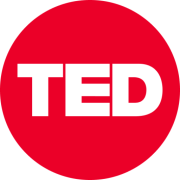https://blog.ted.com/electric-and-empowered-monica-araya-on-costa-ricas-clean-energy-future/
- |
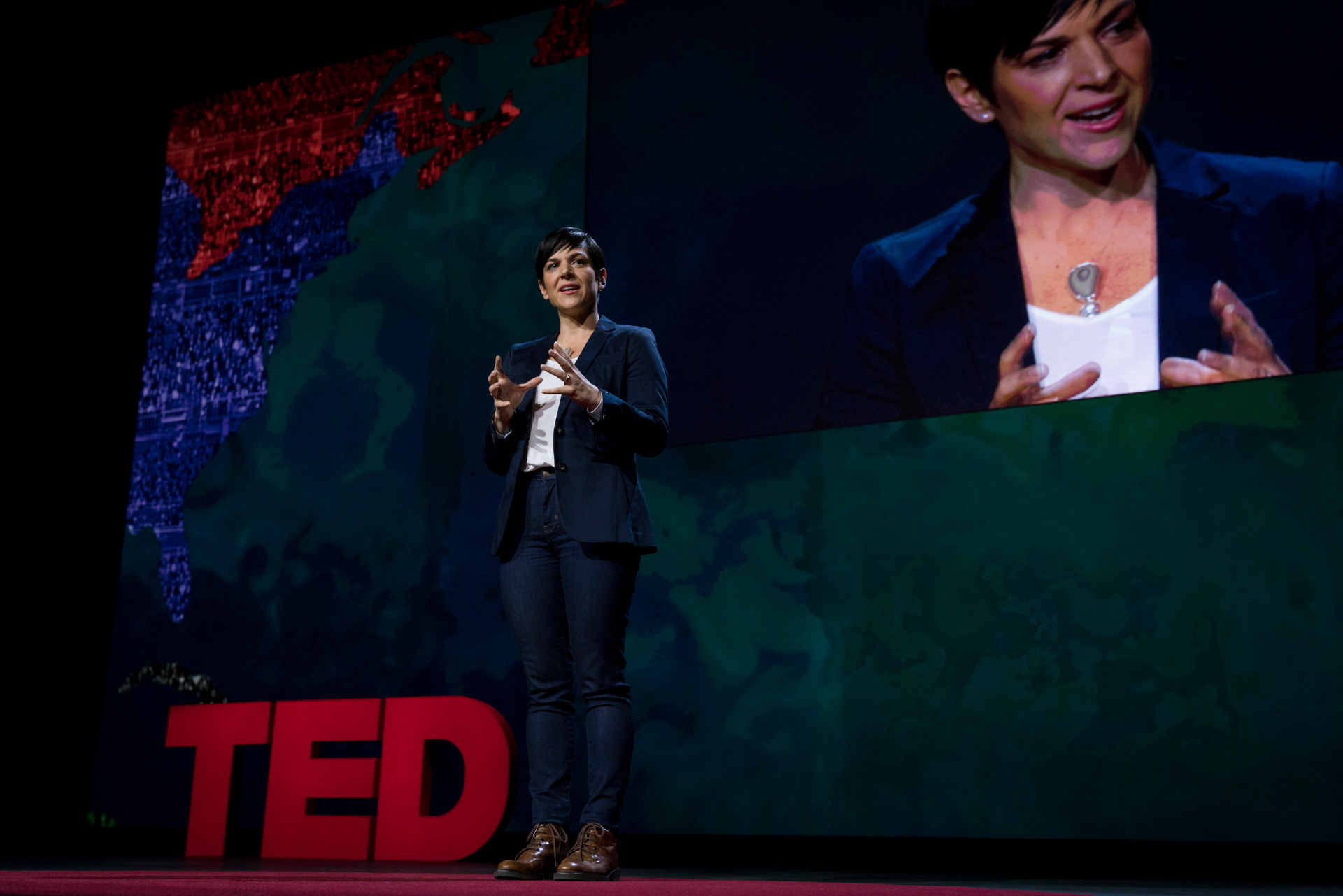
Monica Araya made a big prediction on the TED stage in 2016: Costa Rica, her home country, would be the first nation in the world to pursue 100% renewable energy. Fast forward to 2018, and they’re on their way. Costa Rica already generates over 99% of their electricity through renewable energy, and went 300 days on clean energy in 2017. And in May, in a visionary next step, new president Carlos Alvarado announced at his inauguration that Costa Rica would phase out the use of fossil fuels in transportation, calling it a “generational imperative.” We talked to Monica, the director of Costa Rica Limpia (Clean Costa Rica), about what lies ahead.
This interview has been edited and condensed.
Can you tell us about the clean energy movement in Costa Rica? What are the core objectives and how is Costa Rica positioned to lead the way?
I went on the TED stage [to share] a vision of a small country thinking big. We should completely get rid of fossil fuels. Why not? The country already runs on renewable energy, which is not the case for the world — it’s not the case for Europe, the US, India or China. We’ve already broken free from fossil fuels for power and electricity generation. We’ve done the work with civil society from the ground up, but we needed it to become a vision for the country. Costa Rica is a young nation that’s going to turn 200 in 2021. 200 years ago, we broke free from Spain and we became a free nation — and that matches perfectly with this timing. We’re now ready to say, “We are going to free ourselves from fossil fuels.”
“This is the new Costa Rica, and in that new Costa Rica, we know that the future is renewable and electric.”
We have all the conditions — we have clean electricity, we have a young president who wants to do right, and we have technology on our side. Renewable energy has become a part of the country’s identity. People feel proud: they believe it’s a Costa Rican thing to go green. If you look at the citizen consultations we’ve done with Costa Rica Limpia, people disagree on many things but they agree on this. The president knows that he can set a precedent at a time when the world is trying to figure out how to transition to electric mobility. We have to show that it’s doable and beneficial, that it works technologically; I think that’s the value of a small country doing it first.
What are the challenges that Costa Rica will face in transitioning to 100% clean energy? I’m particularly interested in transportation, and moving from gasoline to electric energy — what are the challenges of that?
In practice, there are five things we have to do. We managed to pass the first electric zero-emissions law in Latin America. That came out of a coalition led by congresswoman Marcela Guerrero Campos. We created that coalition and it led to a law — Argentina and Columbia are going to try to do the same — and now, the law needs to be implemented. It calls for electrification of at least 10 percent of all the transportation owned by the state, and gives financial incentives for five years for electrification. This law is the first step — and it was hard — but we won it. It was a big day. I had some tears in my eyes when we passed it.
Second, on June 5th, on World Environment Day, we launched an initiative to electrify buses. That’s going to take some time because that’s a sector that is resistant to change — in Costa Rica, the buses belong to companies and they run for concessions every seven years. We have to make sure when they apply for concessions for the next seven-year cycle, the mandate for the buses are embedded in this requirement. In the meantime, we’re going to start testing three bus lines. Public transportation is very important in Latin America and in Costa Rica. Latin America has the highest number of people in the world using public transit. So the electrification of buses is a very important step.
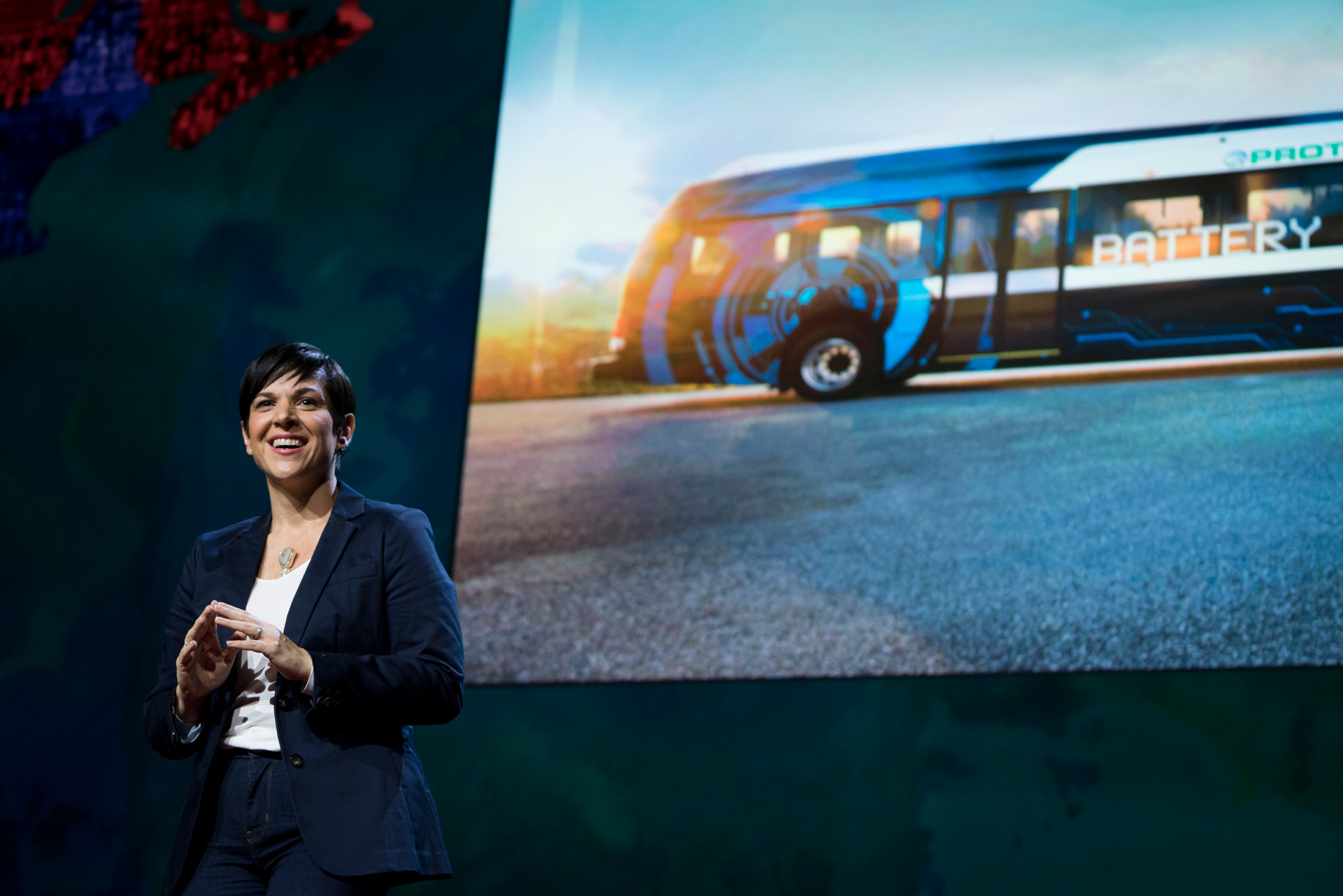
Monica Araya: “By 2022, electric cars and conventional cars are expected to cost the same, and cities are already trying electric buses…if we want to get rid of oil-based transportation, we can, because we have options now that we didn’t have before.” Photo: Bret Hartman / TED
The next element that is very important is the First Lady’s Office. The first lady is amazing — she’s an architect, and she’s totally into decarbonization. Her office is focusing on urban issues, and public transit is a big part of that. Her priority is to lead the process towards the urban electric train. The train is very important to this administration — it’s a symbol of modernization. For Costa Ricans, the train is something that was wanted for a long time and was blocked by bus companies. The First Lady has taken this on; by the end of the four years, we should have started the first electric train.
I think there’s a new generation around the world — it doesn’t matter if it’s Costa Rica, or Columbia, or the Philippines — that aspire to have bikes and safe bike paths. It’s about democratizing the street and making sure the streets don’t belong to private cars. The President of our Congress, Carolina Hidalgo Herrera, goes to work on a bike — she rode her bike to the inauguration in high heels. That’s another route to decarbonization; the bike path is a symbol of good planning, and that is where we have failed in the past. In emerging economies, it’s common to just let cars rule. The electric bus was used to transport all of the ministers to the transportation and it was important for the people to see a zero-emission bus arriving to the inauguration. There’s a lot of backcasting — looking to the ideal future and working backwards from there to see what we need to do. It’s about having a direction of travel.
The President and Minister put a draft law in Congress that makes it impossible for Costa Rica to do any drilling and any exploitation of fossil fuels. We already have a moratorium on oil exploration and exploitation from around 15 years ago that has been sustained by five different governments from three different parties; it cannot be removed. This new government wants to make sure it is the law. It’s a way of saying that they’re serious about fossil fuels not being the future for us. In the early 2000s, there was lobbying by a company in Texas who wanted to do oil exploration in Costa Rica, and there was a lot of pressure on us. The Minister of Energy and Environment at the time said, “No way, this is not going to happen,” — and I know this because I asked him — he said, “Look, I don’t know what will happen, but I can assure you that as long as I’m the minister, they will have to go over my dead body.” That was very reassuring for me to hear as a young advocate.
“There’s a long tradition of environmental protection in Costa Rica.”
Here’s what’s interesting: the Minister of Energy and Environment at that time, Carlos Manuel Rodriguez, is the minister again. It’s reassuring to have a confident and experienced minister because it means we’re going to think big. We organized a free citizen encounter with him a few weeks after he was appointed — we brought him to a museum and sat him in front of citizens. The two of us were on the stage — two chairs, nothing fancy — and I asked him questions and he answered. We also used Facebook Live so people could listen from home. And he says he wants to do these kinds of citizen encounters every six months.
That’s great — connecting the citizens to what can be a more abstract concern is important. Environmental changes can be very macro so bringing it to the citizens in an accessible place of understanding and engagement is necessary.
It’s very important to have symbols. It doesn’t matter if you’re trying to get rid of plastics or protect the ocean — you have to know what your symbols are. We came up with a logo of a contour of Costa Rica’s map that connects through a plug, meaning that there’s clean electricity that connects us as Costa Ricans, as a country.
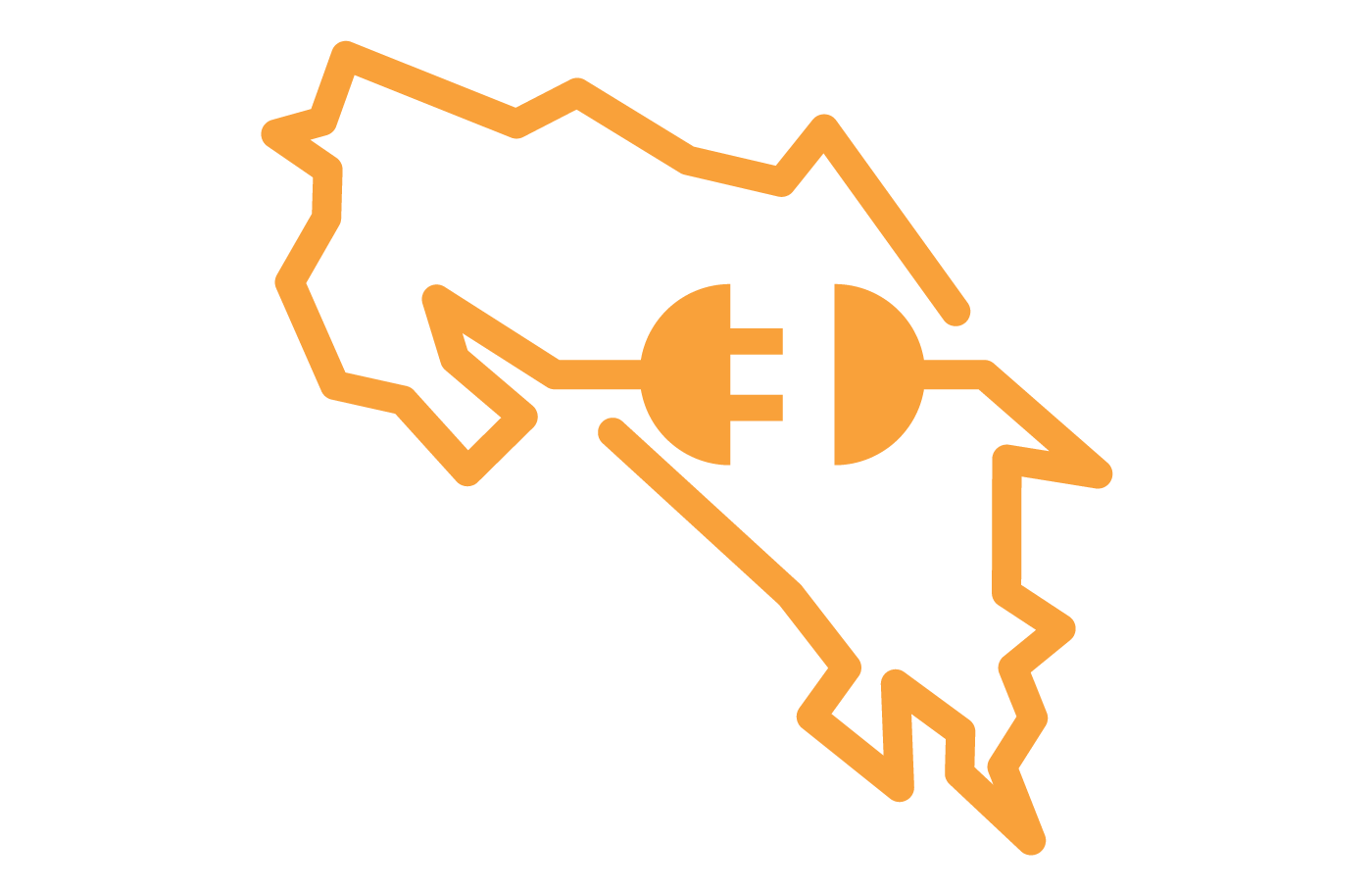
Photo: Costa Rica Limpia
We created the Costa Rican Association for Electric Mobility as a separate entity that represents users of electric mobility — electric buses, motorbikes, cars, etcetera. It’s helped as we talk to young people, mothers, grandmothers — people who don’t spend a lot of time thinking about the climate. It’s easy to feel small and scared, and feel like it all depends on what China or Trump does. That’s a dangerous framing of the problem because it’s so easy to do nothing and have a “why bother?” mentality. And when advocates and governments have that kind of framing, you lose the citizens, the people. So we had to think about the symbols of success. What is the symbol of success if we decarbonize? I’m obsessed with exhaust pipes and the fumes that come out of cars — they’re a symbol of the last century that we really need to get rid of.
“The day we are a country without exhaust pipes — the buses won’t have them, the cars won’t have them — then we have succeeded in our mission to decarbonize the country. Hopefully, the world will get there someday; Costa Rica will need to get there as soon as possible to show that it’s possible.“
The plug has become an important symbol for us. We show a very modern-looking plug and say — look, you have electricity at home to toast your bread, charge your phone, make your coffee. Everything you do is electric. Why on earth would you want an old technology that burns, that’s liquid, that’s not even Costa Rican? It costs a lot to bring it in, it causes climate change, and when you put it in your car, you have to burn it, then it comes out of an exhaust pipe and pollutes the air. People are really intrigued by the idea that everything they use is already electric other than their cars.
This technology will allow us to meet the Paris Agreement targets, and that’s important — we don’t walk around the Paris Agreement targets like other countries do. We won’t have a global impact on emissions or average temperature, because we’re too small. It’s easy to be cynical: people will say, “What’s the point? Whatever you’re reducing in Costa Rica won’t make a difference.” But we’re the ones who benefit the most. You have to win this on the basis of the benefits for the people and avoid the argument that you do it for the 2-degree temperature change — that framing won’t work for a family in Costa Rica.
It’s important to communicate that the situation is tough but it’s also important to pivot to resilience and to ideas of what is possible for us to protect ourselves. The TED Talk let us use a storytelling format — you can share it on Facebook, watch it on a phone. The TED Talk expanded the imagination of the people who listened to it. Even bigger countries like India have told me, “Maybe India can’t move forward the same way that Costa Rica can, but that doesn’t mean that a city in India the size of Costa Rica cannot think big and move faster to clean energy.” That was a very empowering idea. There’s something about smaller locations that’s great because we can move forward and just wait for the rest of the country to get there. In my country, if you want to get people excited, you have to say that this will make us a country that could inspire others.
“We matter because of our ideas, not our size. Being small doesn’t mean thinking small.”
Can you tell us about your work with Costa Rica Limpia? How do you involve and center citizens in your approach?
Costa Rica Limpia (Clean Costa Rica) is centered on engaging citizens and consumers in the transition to a fossil free society. We educate, inspire and empower citizens by translating technical issues such as decarbonization, Paris targets and NDCs into layman’s language. We are very focused on zero emissions mobility because being carbon free in Costa Rica means using electricity instead of oil for transportation. We design education materials like infographics and videos that respond to common questions and myths. We also conduct citizen consultations on climate change and renewables, based on a Danish Board of Technology methodology. We pioneered the concept of Electric Mobility Citizen Festivals (we organized two in 2017 and 2018) because it is critical to get people to experience these new technologies.
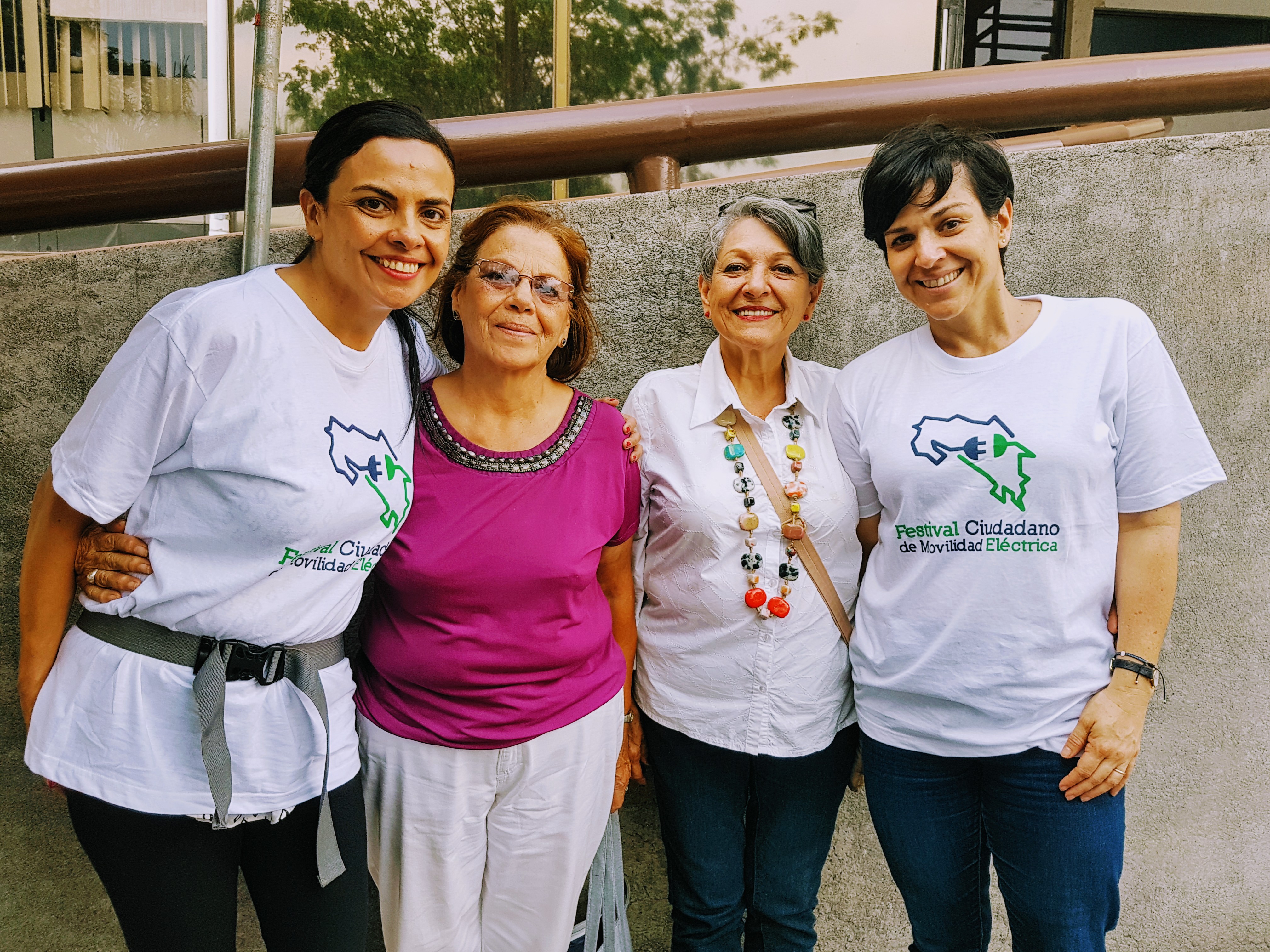
Congresswoman Marcela Guerrero and Monica Araya attend an Electric Mobility Citizen Festival with their mothers. Photo: Monica Araya
In your talk, you mention that Costa Rica disbanded its army in 1948 and has been able to redirect those funds to programs that develop social progression and growth. In a world that, in a lot of respects, seems unwilling and unable to change, how has Costa Rica been able to cultivate a culture of forward-thinking innovation?
This would not be possible if we didn’t have a social contract that takes care of people’s needs by giving them free health care and free education. We do this work because it makes life better for people who are taking public transit. There’s something about the social guarantee in the ’40s before the abolition of the army that was important. It allowed people to have a safety net, and when you do that, you build a more resilient society. Social progress was able to develop in Costa Rica partially because we have the infrastructure for it. When you go to other places in Latin America, there is a very small group of people who have nearly everything, and you have a very large population that is very poor; we have been very fortunate in Costa Rica to be able to negotiate with those stakeholders.
If there’s something I’ve learned about Costa Rica, it’s that we’ve succeeded because we have a strong middle ground in politics. The new president, Carlos Alvarado, as a political scientist, is trying to practice this lesson from Costa Rica’s history. This is an environmental story, yes, but it’s also about balance. You have to do the environmental work but you can do it better when you have invested in the people’s social progress and have turned it into a good business opportunity. Costa Rica has a larger group of people making money off ecotourism now than in the ‘80s. This bet on natural capital has paid off — when you look at the materials and marketing of Costa Rica in the world, it emphasizes that we have a social safety net. It’s a balancing act between social, environment and economic concerns that we need to get right. It’s worked in the past, and if we want to make sure it works now with fossil-free Costa Rica, we will have to be able to bring on board the private sector but also be very socially oriented. We have to make sure that the people who have the least benefit the most.
What are some other ways Costa Rica is working to protect the environment?
There’s a big movement in Costa Rica to do more about the oceans and our plastic consumption as well. There is a protected area that was launched last year in the south of Costa Rica — it continues with our tradition to resist the exploitation of our natural capital for fossil fuels. The conservation agenda today is not just the land — it’s the oceans too. The relationship between the oceans and the fossil fuel agenda is extremely close because the drilling often happens offshore. If we keep protecting areas around the world, it’ll hopefully create an awareness that the gasoline you put in your car comes from somewhere. The same thing with plastics — there’s a cultural shift and awareness about our unsustainable plastic use. When you link it to oil, it’s really interesting: it comes from oil, from petroleum and natural gas. We continue to work in different bubbles — I’m in the fossil fuel and energy transportation bubbles, but other people are in the ocean bubbles and plastic bubbles. What links us is that we all advocate that we fundamentally have to change our relationship to fossil fuels.
Are you going to play a role in the energy transition? What are your next steps?
I’m going to help with the decarbonization pathways — that takes time, and it takes not just technical work but also consultation with key stakeholders. There’s methodologies with this but the Minister doesn’t want to end up with something too theoretical but rather, is grounded in our political reality. I’ll be helping with that. We need to find as many partners as possible — in Costa Rica, obviously — but also outside. My role is to tell the story as best as I can so that we can attract anyone around the world with brilliant ideas. We want to be the testing ground for a fossil-free society. In Costa Rica Limpia, I see the electrification of buses as a very strategic action plan. This is something that is going to transform life in a very tangible way. The buses are beautiful, quiet, and they don’t pollute. Imagine a single mom with two kids who will be commuting on that bus — her life will be transformed for the better.
